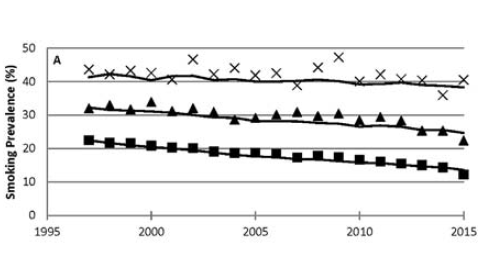Margarete C. Kulik, PhD; Stanton A. Glantz, PhD
Published online: October 10, 2017
Conclusions: Although smoking more heavily than the general population, smokers with psychological distress, like the general population, are softening over time. To improve health outcomes and increase health equity, tobacco control policies should continue moving all subgroups of smokers down these softening curves, while simultaneously incorporating appropriately tailored quitting help into mental health settings.
Excerpt from news coverage:
“The finding that there were more quit attempts among smokers with the highest levels of distress might reflect the fact that although these smokers are motivated and willing to quit, they may need more help quitting successfully,” said senior author Stanton Glantz, PhD, UCSF professor of medicine and director of CTCRE. “This indicates that we should be encouraging our mental health providers to treat tobacco dependence along with other problems. Contrary to popular belief, treating nicotine addiction does not complicate the treatment of other substance abuse or mental health issues and in fact has been shown to improve outcomes among people in substance abuse treatment and recovery. Even smokers with the greatest psychological distress can be reached and helped to quit.”
Download a PDF of the full article here.
